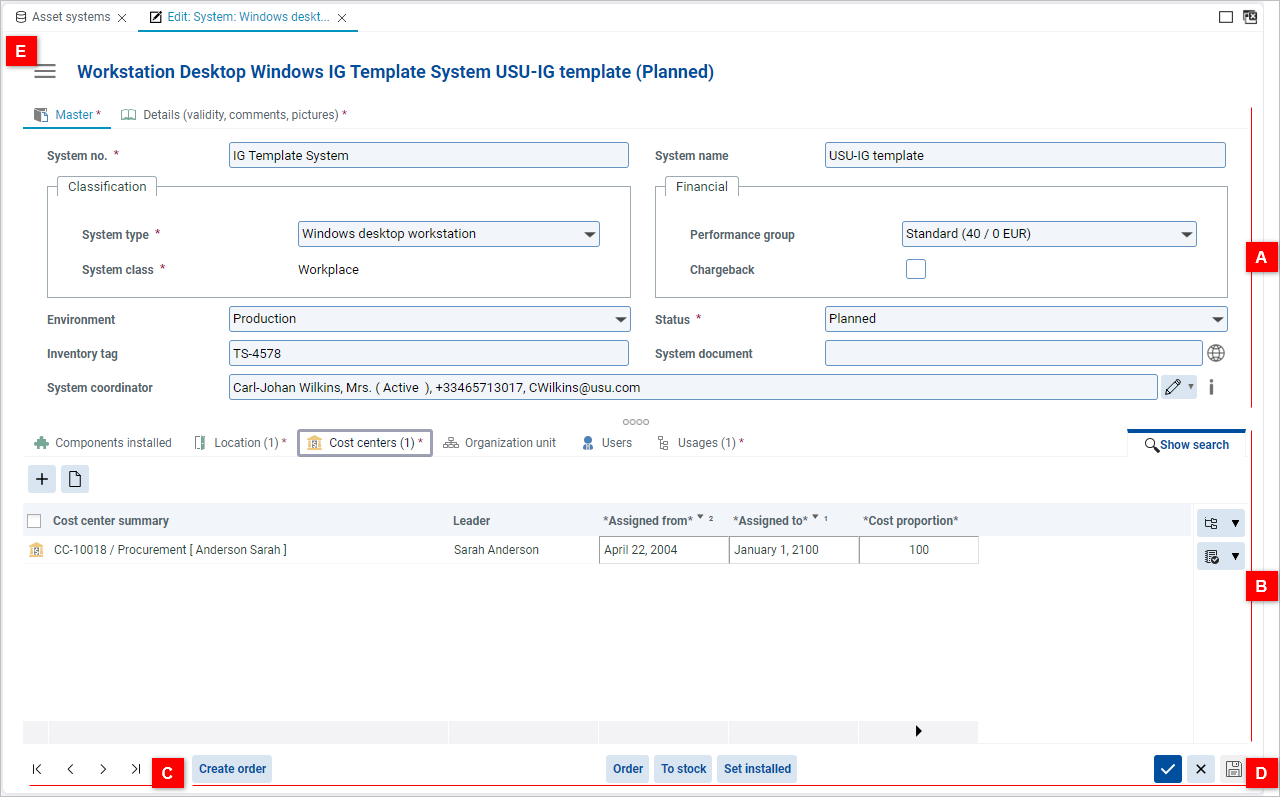Editor structure: Classic view
The Classic editor view consists of tabs and reference catalogs sorted in a typical manner: The upper part of the editor is structured by tabs in which you can find individual attributes of the object together with Reference Views of linked objects. The lower part of the editor may contain referenced catalogs which represent complex relations to other objects.
An alternative way of editor display is the Section View.
The actual content and layout of the editor depends on individual customization.

An editor in the classic view consists of the following parts:
Editor tabs (A)
Individual tabs contain attributes and reference views grouped according to their function in the administration of the object.
Reference catalogs (B)
Reference catalogs display complex relations of the edited object to other objects. Each tab contains one reference list displaying collections of linked objects.
Listing controls (C)
Allows you to leaf through the objects in the catalog while having the edit view in focus.
View controls and catalog-specific actions (D)
Basic control buttons and catalog-specific actions. Note that some buttons may be also adjacent to an attribute field in the expanded section.
Hamburger-icon menu (E)
Displays a menu containing the following options:
Switch editor layout
Allows you to toggle between the Classic editor layout and the Sections layout.
Reference catalogs
Here you can enable and disable the Reference Views/sections or to sort their order by drag&dropping the individual reference view in the menu.
System actions
A set of system actions, corresponds to actions in the right-click menu.
Note: Dragging the splitters, it is possible to adjust mutual ratio between the size of the editor tabs and reference list sections.